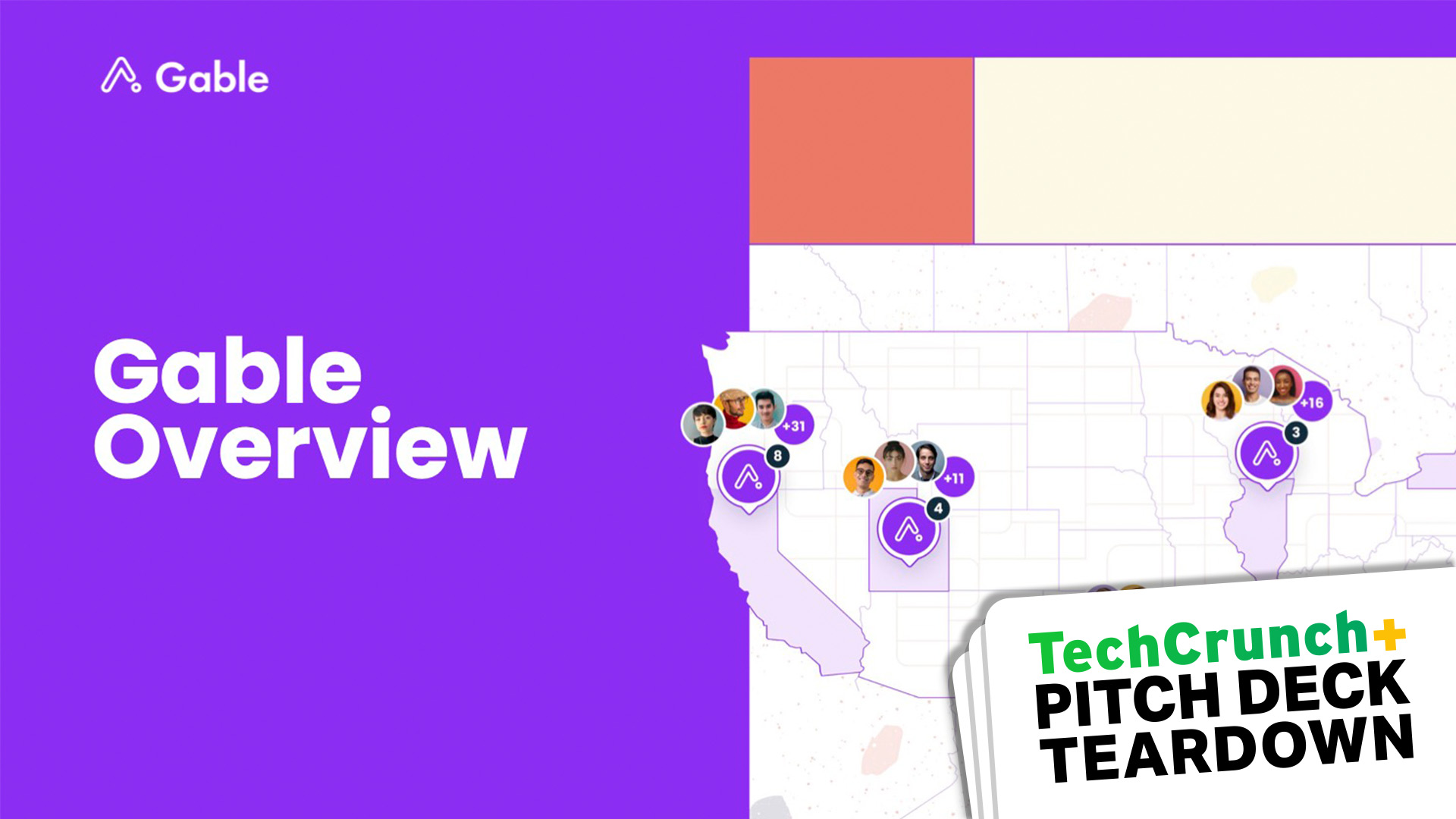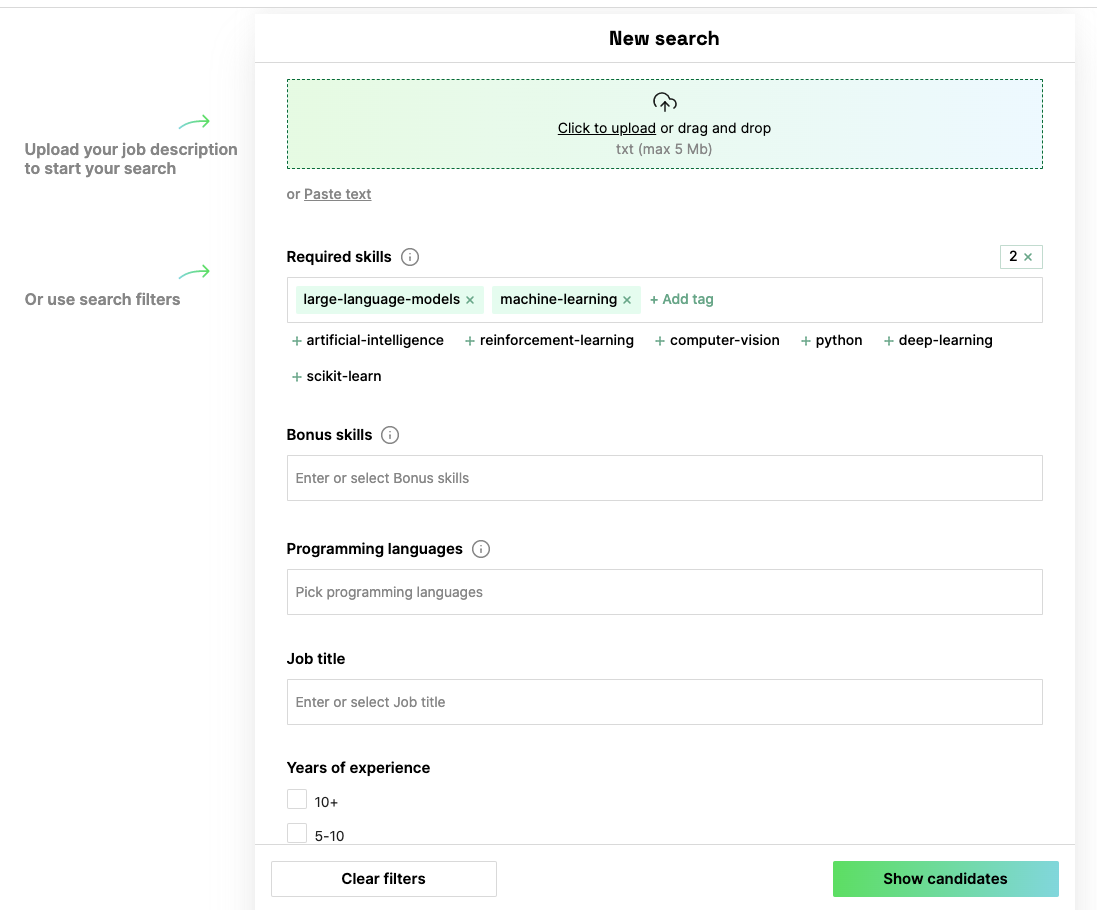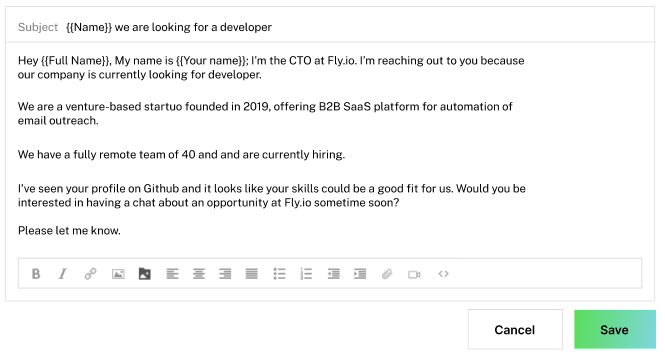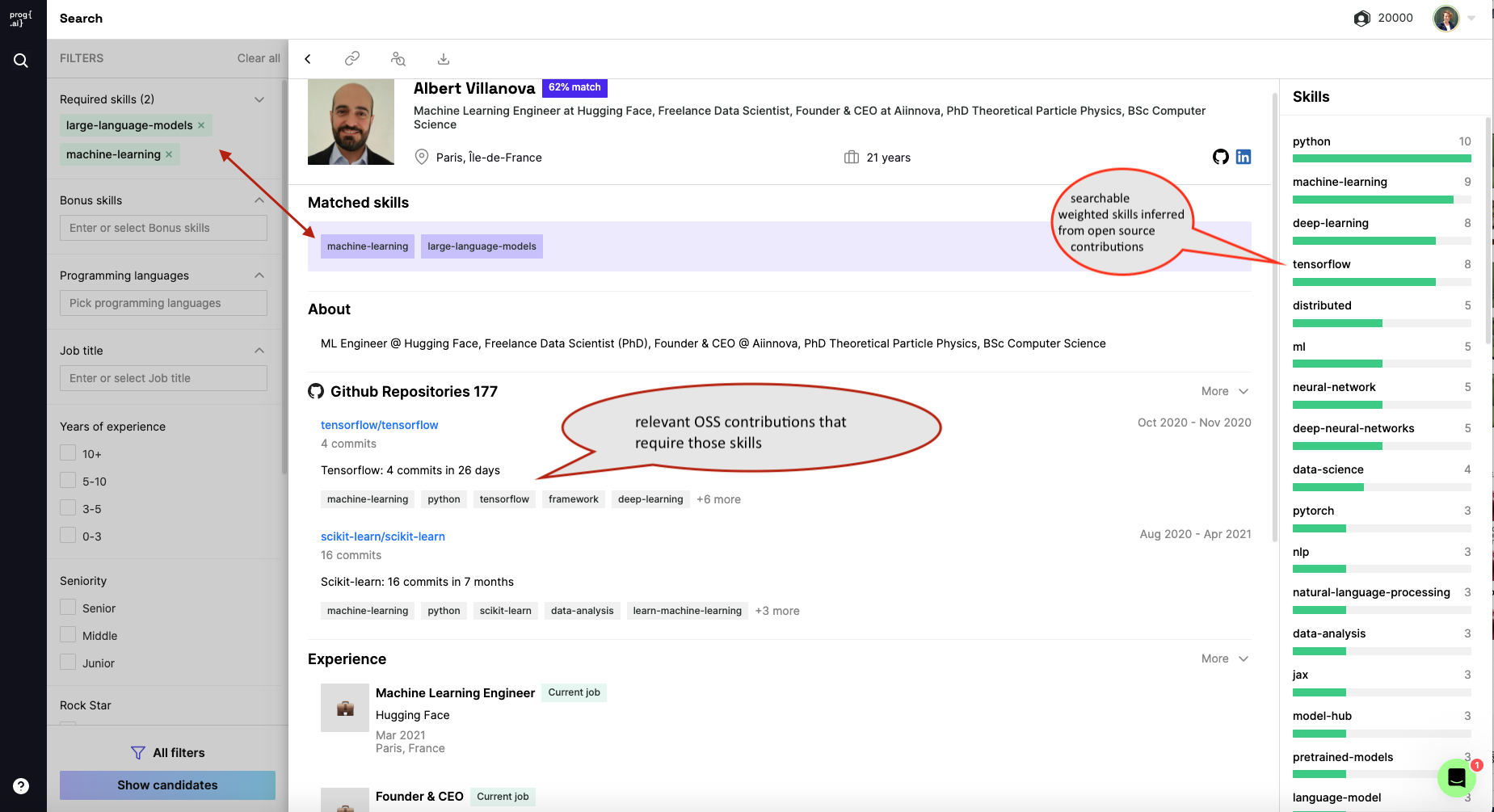Category: TECHNOLOGY
Amazon pauses HQ2 construction after nationwide battle royale over location
Remember when Amazon turned the United States into Thunderdome, making every state battle over the right to host the company’s next big headquarters and 25,000 jobs? Well, after laying off more than half that number, Amazon is tapping the brakes on HQ2 in Virginia, putting off construction of a trio of 22-story office towers.
The news was first reported by Bloomberg. The first phase of construction, called Metropolitan Park, is already complete and will host some 8,000 employees when it opens in June — assuming the new “three days a week” rule remains in place. The second, larger section known as PenPlace was originally set to break ground around now. But that has been indefinitely delayed.
Unfortunately, this includes the shaft-like “Helix” companion building to the “Spheres” in Seattle (known by a different name locally) is also being put off.
Although Amazon was adamant that “this shift is not a results, nor indicative, of role eliminations,” it’s impossible to consider the decision without reckoning with the fact that the company recently laid off some 18,000 people across the company. I asked whether employees in Virginia were among those laid off (it seems very likely), but have not received any response.
This isn’t the only place where Amazon seems to have gotten ahead of itself in office space. In its Seattle headquarters entire floors are vacant, construction has stopped on a new office tower in Bellevue (just east of Seattle) and in Nashville.
It’s not alone in this, of course: many tech companies were building millions of square feet of new offices leading up to 2020. Amazon wasn’t even the only one going fishing to see which state would offer the biggest tax breaks (Washington and Seattle have been leaning left recently and threatening new taxes, emboldening escape plans to friendlier climes).
And it’s not alone in not knowing exactly what to do in this new world of remote work, having invested truly enormous sums on office complexes that, as it turns out, very few employees want or need. Simply forcing people to come in to work has been one “solution,” and kicking the can down the road on more expensive offices is another.
But Amazon committed to bringing 25,000 jobs to HQ2 by 2030 and “our long-term intention and commitment remains unchanged,” the company wrote in a statement. A company as large and durable as Amazon can weather the dual storm of macroeconomic conditions and the folly of its leadership’s business decisions, filling the sails on the next upturn and hiring like crazy when the time comes. After all, there are tax breaks to be had!
Amazon pauses HQ2 construction after nationwide battle royale over location by Devin Coldewey originally published on TechCrunch
At Upfront Summit 2023, AI is the omnipresent celebrity
A marching band, a red carpet and a DJ who codes her beats are all things you can get before coffee (and a business card) at the Upfront Summit, one of venture’s most awaited conferences. But not even a marching band couldn’t pull focus away from the true star of the show: AI.
Upfront Summit founder Mark Suster and partners Kerry Bennett and Kobie Fuller even performed a sketch centered around AI. The takeaway? AI is a tempting sector to invest in, but it’s too still early to trust blindly.
This isn’t new; hyped-up technologies often get outsized interest. But the atmosphere is different from what it was in 2021 when investors were throwing billions of dollars at 15-minute grocery delivery companies and web3. Venture dry powder is locked up, deals are getting done slower, and some investors are still licking their wounds from the downturn thus far.
AI is feeling it. According to a TechCrunch analysis of PitchBook data, “generative AI companies aren’t going to even set a local quarterly maximum for fundraising in Q1 2023.” Understanding how recently humbled check-writers are thinking about AI will help tech better understand how to execute moonshot visions.
At Upfront Summit 2023, AI is the omnipresent celebrity by Natasha Mascarenhas originally published on TechCrunch
https://techcrunch.com/2023/03/03/upfront-summit-2023-artificial-intelligence/
SpaceX’s acquisition of Swarm is paying off with new Starlink thrusters
Earlier this week, SpaceX released more information about the new argon Hall thrusters that will power the Starlink V2 mini satellites, an innovation that likely has much to do with the company’s acquisition of Swarm Technologies in 2021.
The deal, which closed in July 2021, was an extremely rare move for SpaceX. Swarm — which manufactures and operates ultra-small satellites for IoT devices — remains the company’s only acquisition in its 21-year history. It was also notable because, relatively speaking, Swarm was still quite a young company: When the deal closed, the startup had around 30 employees, 120 sandwich-sized satellites in orbit and had only just gone live with its flagship product earlier that year.
But in the space industry, talent is king, and it seems that SpaceX has benefited enormously from absorbing Swarm’s team.
Swarm’s two co-founders, Sara Spangelo and Benjamin Longmier, were installed as senior directors of satellite engineering at SpaceX. Both are part of Starlink’s direct to cell team — which is aiming to leverage the Starlink constellation to bring satellite connectivity to smartphones around the world. But Longmier also states on his LinkedIn that he leads Starlink’s electric propulsion group — that is, the group responsible for engineering the new argon Hall thrusters announced this week.
Hall thrusters themselves are not new. The name refers to a general propulsion tech that’s decades old. Essentially, Hall thrusters use a magnetic field to ionize a propellant and produce plasma. Satellites employ thrusters throughout their useful life — to adjust attitude, avoid collisions with other objects or de-orbit at the end of the lifespan.
The real innovation is in the propellant: argon. Argon is many times cheaper than xenon (the most common, and expensive, propellant used in Hall thrusters) and krypton (the propellant SpaceX used in Starlink V1 and V1.5 satellites), in part because it’s more plentiful.
“The transition to argon was tricky, but necessary, as krypton is too rare,” SpaceX CEO Elon Musk explained on Twitter. According to specs shared online, these new thrusters will also generate 2.4 times the thrust and 1.5 times the specific impulse (a measure of how efficiently the unit uses propellant, versus the thrust generated) than previous Starlink thrusters.
As early as 2011, Longmier was lead authoring technical papers on electric propulsion systems that use argon gas. He also co-authored other papers on thrusters using argon and xenon as propellant. On Twitter, Longmier said that it was 556 days from thruster clean-sheet to orbit: That would mean SpaceX would’ve started work on the thrust around the end of August, 2021, very shortly after Swarm was acquired. Longmier did not respond to TechCrunch’s request for comment.
SpaceX’s acquisition of Swarm is paying off with new Starlink thrusters by Aria Alamalhodaei originally published on TechCrunch
Meta rolls out new Facebook Reels features, expands max video length to 90 seconds
Meta announced today that it’s adding support for longer Facebook Reels of up to 90 seconds, along with some new creative tools. Up until now, Facebook Reels were limited to 60 seconds. The changes come several months after Meta launched support for longer Instagram Reels of up to 90 seconds. The expansion followed TikTok’s move into YouTube’s territory with videos that can be up to 10 minutes in length, instead of just three.
The company is also rolling out more creative tools, including a new templates feature that lets users create Reels with trending templates. The new feature, which rolled out to Instagram Reels last year, allows users to create new Reels using the same structure as one they just watched. Templates are somewhat similar to TikTok’s own templating option.
Image Credits: Facebook
In addition, Facebook Reels is getting a new “Grooves” feature that automatically aligns and syncs the motion in your video to the beat of your favorite song through visual beat technology. Syncing video to sounds has been a defining characteristic of TikTok, so it’s no surprise that Meta is bringing it to Facebook Reels after rolling it out for Instagram Reels last year.
It’s worth noting that all of these new Reels features first made their way to Instagram more than seven months ago, and are now being released on Facebook. It’s possible that Meta wanted to see how they were being used on Instagram Reels before bringing them over to Facebook Reels.
Facebook launched Reels last year in a move that was seen as a key part of Meta’s response to the TikTok threat. Although Meta initially saw Reels as a way to directly combat TikTok with a feature inside the Instagram app, the company soon realized it could mount a more powerful counteroffensive if it also brought Facebook into the mix and allowed for cross-posting between the two social networks.
Meta says Reels is its fastest growing format and that it continues to grow quickly. Reels plays across Facebook and Instagram have more than doubled over the last year, the company said in an email. It also noted that reshares of Reels have more than doubled on Facebook and Instagram in the last six months. Meta plans to continue to roll out new features for Reels to make it easier for creators to get discovered.
Meta rolls out new Facebook Reels features, expands max video length to 90 seconds by Aisha Malik originally published on TechCrunch
Embark Trucks lays off workers, explores liquidation of self-driving truck assets
Embark Trucks, the autonomous trucking company that went public in 2021 via a merger with a special purpose acquisition company, is cutting 70% of its workforce and shutting down two offices. And the pain may not be over as CEO Alex Rodrigues noted in an email to employees that the remaining 30% of workers will focus on winding down operations.
The company said in a regulatory filing that about 230 employees were laid off Friday. A source familiar with the plan said the cuts were announced Friday morning. The layoffs are expected to occur in the first and second quarters.
“Unfortunately, after thoroughly evaluating all alternatives, we have been unable to identify a path forward for the business in its current form, Rodrigues wrote, later adding “Today, having exhausted all alternatives, we are taking the incredibly difficult step of laying off ~70% of the company, and shutting down our SoCal and Houston offices.”
The layoffs come more than a month after banking advisory firm Evercore met with various AV companies to explore selling Embark’s assets, according to one source.
A sale of assets appears to be the next order of business, according to a regulatory filing posted Friday and Rodrigues’ email.
Embark’s board approved Wednesday “a process to explore, review and evaluate a range of potential strategic alternatives available to the company,” including alternative uses of its assets to commercialize its technology, additional sources of financing, as well as potential dissolution or liquidation of its assets.
“The board’s decision comes following an extended evaluation by the company of alternative markets in which to commercialize its technology as well as an exploration, performed with the assistance of a financial advisor, of a potential sale of the company,” the filling said.
Embark Trucks was founded in 2016 by CEO Alex Rodrigues and CTO Brandon Moak and quickly got the attention of investors. Rodrigues and Moak met while working on self-driving technology at the University of Waterloo, where both completed Mechatronics engineering degrees.
By 2018, the startup had raised about $47 million. But it was the SPAC boom that really delivered the capital — at least for a short time. In 2021, agreed to merge with special purpose acquisition company Northern Genesis Acquisition Corp. II in a deal valued at $5.2 billion.
Today, Embark Trucks is running short on capital like other companies trying to develop and commercialize autonomous vehicle technology. The company’s market capitalization is about $90 million; at the end of the third quarter, the most recent quarterly report the company has filed, it had about $190 million in cash and cash equivalents.
Embark Trucks lays off workers, explores liquidation of self-driving truck assets by Kirsten Korosec originally published on TechCrunch
TechCrunch+ roundup: Ocean tech investor survey, AI and PR, L-1 visa options
Many devs rely on donations and crowdfunding to monetize open source projects, but with the proper planning, teams can leverage their work for commercial clients who’ll put them in a higher tax bracket.
Offering users customer support or consulting services are common revenue streams, according to product development consultant Victoria Melnikova, who also says devs should form partnerships and use platforms like Reddit and Hacker News to reach potential paying customers.
“To find your path, talk to your clients and understand their goals and pains.”
Last week, the U.S. Federal Trade Commission, which protects consumers from deceptive business practices, issued an advisory titled “Keep your AI claims in check.”
When it comes to marketing, “false or unsubstantiated claims about a product’s efficacy are our bread and butter,” wrote Michael Atleson, an attorney with the FTC’s Division of Advertising Practices.
Artificial intelligence is a on everyone’s lips at the moment, “and at the FTC, one thing we know about hot marketing terms is that some advertisers won’t be able to stop themselves from overusing and abusing them.”
Given the renewed interest, “for companies where AI was previously No. 4 on the list of proof points, machine learning capabilities should merge into the main hook of the announcement,” advises PR strategist Camilla Tenn.
Full TechCrunch+ articles are only available to members
Use discount code TCPLUSROUNDUP to save 20% off a one- or two-year subscription
“If AI-related coverage can get a new, unknown brand into its target publications today, it could help get the brand’s pitch deck in front of potential investors or partners tomorrow,” she writes in TC+.
Tenn recommends imitating major players like Google and Samsung, which have dedicated teams that release a steady stream of material about “ongoing projects” tied to prevailing tech trends.
“Even if those projects don’t see the light of day, the PR team has strategically positioned the brand as ‘innovative,’” says Tenn. “With this precedent, startups should not feel abashed to use any means necessary to get their name out there.”
Good advice for marketing mercenaries, but keep those pitches straight — reporters know when we’re being sold to, and the FTC isn’t messing around.
Thanks for reading — and for making this TechCrunch’s fastest-growing newsletter last month!
Have a great weekend,
Walter Thompson
Editorial Manager, TechCrunch+
@yourprotagonist
How to turn an open source project into a profitable business
Image Credits: Juanmonino (opens in a new window) / Getty Images
Many devs rely on donations and crowdfunding to monetize open source projects, but with the proper planning, teams can leverage their work for commercial clients who’ll put them in a higher tax bracket.
Offering users customer support or consulting services are common revenue streams, according to product development consultant Victoria Melnikova, who also says devs should form partnerships and use platforms like Reddit and Hacker News to reach potential paying customers.
“To find your path, talk to your clients and understand their goals and pains.”
To fix the climate, these 10 investors are betting the house on the ocean

Image CreditsLiang Wendong/VCG / Getty Images
Tapping the ocean for energy led to disasters like the Deepwater Horizon oil spill, which released nearly 5 million barrels of crude oil into the Gulf of Mexico in 2010.
Today, wind power and wave action are just two technologies leading investors to take a closer look at ocean conservation technology, reports Tim De Chant.
To learn more about the opportunities they’re chasing and discover how climate change is shaping their investment thesis, he surveyed:
- Daniela V. Fernandez, founder and CEO of Sustainable Ocean Alliance, managing partner at Seabird Ventures
- Tim Agnew, general partner, Bold Ocean Ventures
- Peter Bryant, program director (oceans), Builders Initiative
- Kate Danaher, managing director (oceans and seafood), S2G Ventures
- Francis O’Sullivan, managing director (oceans and seafood), S2G Ventures
- Stephan Feilhauer, managing director (clean energy), S2G Ventures
- Sanjeev Krishnan, senior managing director and chief investment officer, S2G Ventures
- Rita Sousa, partner, Faber Ventures
- Christian Lim, managing director, SWEN Blue Ocean Partners
- Reece Pacheco, partner, Propeller
Pitch Deck Teardown: Gable’s $12M Series A deck

Image Credits: Gable (opens in a new window)
Remote workspace platform Gable raised a $12 million Series A to scale up its operations, which currently serves more than 5,000 workers in 26 countries.
“Making the business of shared workspaces easier for startups certainly has its challenges, but it’s also a large and growing market,” writes Haje Jan Kamps. “Gable weaves its story together with ease.”
Here’s their 21-slide Series A deck:
- Cover slide
- Team slide
- Market context slide (“The revolution of remote work”)
- Problem slide No. 1 (“Going remote-first is hard”)
- How people solve it now (“How it’s done today”)
- Problem slide No. 2 (“Main Issues”)
- Solution slide
- Traction slide (“Where we are”)
- Product slide No.1 (“Employee view”)
- Product slide No. 2 (“Management and insights”)
- Product slide No. 3 (“Host view”)
- Traction slide (“Partnership with over 800 spaces”)
- Value proposition slide (“Why they choose Gable”)
- Case study slide No. 1
- Case study slide No. 2
- Business model slide
- Market-size slide (“TAM”)
- Go-to-market slide (“Scalable process”)
- Marketing slide (“Massive channel opportunity)
- Product road map slide
- Thank you slide
Dear Sophie: What are my options for changing my status from an L-1 visa?

Image Credits: Bryce Durbin/TechCrunch
Dear Sophie,
I started working for my current employer on STEM-OPT, but I’ve lost out in the H-1B lottery four times. Thankfully, my employer transferred me to an international office, and I am now coming back to the U.S. on an L-1 visa.
I’ve heard many complaints from my classmates about not being able to switch employers on an L-1 visa. I don’t see myself staying at my employer for six more years, which is the estimated time until I can get a green card based on my employer’s internal policy.
What are my options for changing my immigration status so I can work at a startup in the U.S. within a year or two?
— Tenacious Transferee
Key legal issues for influencers and brands (and how to deal with them)

Image Credits: SomeMeans (opens in a new window) / Getty Images
No one needs a mega-influencer like Serena Williams or a Kardashian to build buzz for their startup — an evangelist with just a few thousand followers can push qualified customers into your product funnel.
But before hiring a TikTok or YouTube personality, brand marketers should brush up on the laws that govern how influencers operate, and the risks associated with failing to comply.
“Novel legal issues and risks have emerged for both influencers and brands,” says Nicholas Sandy, a litigator at Pryor Cashman.
“Key, recurring issues relate to copyright licensing and infringement, disclosures and statements in endorsements, compliance with securities laws, and defamation.”
Apply now to speak at TechCrunch Disrupt in September

Interested in speaking at TechCrunch Disrupt this September in San Francisco?
Submit a title and a description for the topic you’d like to talk about before April 21.
Selected applicants will have a chance to lead a roundtable discussion or participate in a breakout session followed by an audience Q&A.
TechCrunch+ roundup: Ocean tech investor survey, AI and PR, L-1 visa options by Walter Thompson originally published on TechCrunch
Perhaps Substack can grow just fine without venture dollars
Substack, a publishing platform known for its newsletter service, announced this week that it had crossed the 2 million paid subscription mark. Given the wealth of historical data we have concerning the growth of paid subscribers at Substack, the number got our attention.
Substack’s simple business model also makes it possible to generate a few gross transaction volume and revenue guesses for the company, which we’ll explore.
The Exchange explores startups, markets and money.
Read it every morning on TechCrunch+ or get The Exchange newsletter every Saturday.
First, a little context: Substack’s first known external capital came in January 2018 via the Y Combinator startup accelerator. The company raised a $2 million seed round in April of the same year. From there, the startup’s ability to raise new funds quickly accelerated, with Andreessen Horowitz leading Substack’s $15.3 million Series A in mid-2019 and a massive $65 million Series B in March 2021.
Perhaps Substack can grow just fine without venture dollars by Alex Wilhelm originally published on TechCrunch
https://techcrunch.com/2023/03/03/perhaps-substack-can-grow-just-fine-without-venture-dollars/
Indian startup Yes Madam exposed sensitive data of customers and gig workers
Indian at-home salon platform Yes Madam exposed the sensitive data of its customers and gig workers due to a server-side misconfiguration.
Noida-based Yes Madam operates in more than 30 cities in the country, according to the firm’s website. The platform offers salon services at home, including therapies, massage, spa and male grooming. Yes Madam’s mobile apps also attracted over a million downloads.
But the startup left a database containing full names, mobile numbers, mailing addresses and email addresses of hundreds of thousands of Yes Madam customers connected to the internet without a password since at least February 20. The database also included customers’ location data, including their latitude and longitude values, as well as payment links, and user device details, such as the model names and IMEI numbers.
Additionally, the startup exposed profile images, names and mobile numbers of gig workers on the platform.
Security researcher Anurag Sen of CloudDefense.ai found the exposed database and asked TechCrunch to help report it to the startup.
Anyone familiar with the database’s IP address could access the spilling data due to the misconfiguration using just their web browser. Sen said the database had entries of more than 900,000 users.
Yes Madam secured the database on Friday, shortly after TechCrunch reached out with details. Yes Madam co-founder Mayank Arya confirmed to TechCrunch that it had put in place a fix.
When asked if Yes Madam had the technical means, such as logs, to determine whether the exposed data was accessed by anyone else, Arya did not comment further.
Sen also informed India’s computer emergency response team CERT-In, the lead agency for handling cybersecurity issues in the country, about the data exposure.
Indian startup Yes Madam exposed sensitive data of customers and gig workers by Jagmeet Singh originally published on TechCrunch
https://techcrunch.com/2023/03/03/yes-madam-india-data-exposed/
Uber is coming for Instacart
Uber has rolled out updates to its Shop and Pay feature that address three of the most commonly raised courier issues: out of stock items, digital payments and order clarity before accepting a trip.
The ride-hail and delivery giant quietly launched Shop and Pay last year, a feature that lets delivery workers opt into receiving trips to do grocery or other retail shopping for customers before dropping off orders to the customer’s door. Basically, it’s Uber’s attempt to follow the Instacart model, which is working well for the incumbent grocery delivery company. Instacart reported a surge in sales and profits in the fourth quarter of 2022, buoyed by the growing consumer trend of buying groceries online rather than in-store.
Since launching six months ago, Uber says nearly 200,000 couriers are actively doing shopping trips each month in the U.S. For reference, over 600,000 people work for Instacart as shoppers, according to usage data from Business of Apps.
Uber sees a huge opportunity to scale that number up and beef out its grocery delivery pillar — just one part of the company’s plan to cross-sell customers across the platform, from food delivery to grocery delivery, grocery to alcohol, alcohol to experiences, experiences to rides.
(SeeThe Amazonification of Uber)
A crucial factor in this plan is ensuring drivers, or “shoppers” in this case, don’t absolutely hate the job — hence the app updates.
“Shoppers are a key ingredient to the success of Uber’s grocery ambitions, and we’re making great progress — but have a ways to go,” said Meghan Casserly, Uber’s head of communications for delivery. “…but framed against the more than 5.4 million drivers on the Uber platform worldwide, you can see the possibility for converting even a fraction of them to add shopping trips to the mix.”
Finding ways to make the experience of shopping for a customer as easy as possible is well within Uber’s interest to increasing usage of the offering. Shoppers not only have to deliver the orders, but they have to go into the store, ask customers questions, pay for orders and make decisions on what to do if there’s no more ginger lemon kombucha.
The first update gives shoppers a solution to out of stock items. Uber said this was consistently the No. 1 point of dissatisfaction in surveys, with as many as one in five grocery orders including at least one out of stock item. Figuring out a potential replacement is not only an annoying addition to a shopper’s mental load, but it can also lead to shoppers wasting time picking out a substitution. That’s a problem because shoppers aren’t paid based on how much time the gig takes — they accept the rate Uber gives them when they accept the gig, so time is of the essence.
Now, when a shopper tells the app they can’t find the originally requested item in the store, the app will show them a list of suggested substitutions based on similar brands or items to help speed up the decision making process. Shoppers can then send that suggestion to the customer directly in the app for review. Instacart has a similar feature, wherein a driver can choose between replacement suggestions prompted in the app, and the customer can approve the replacement on their end.
Uber has also found an apparent solution to giving its drivers a physical credit card that’s pre-authorized to cover the costs of orders they shop for. Drivers complained about their cards getting declined, putting them in the uncomfortable decision of either canceling the order and thus wasting their time, or paying out of their own pocket and rolling the dice on a reimbursement.
Now across the U.S., shoppers can activate a digital card on their phones using Apple or Google Pay. Uber said in a recent survey, 92% of shoppers found digital payments easy to activate, and 88% said it was easy to check out.
For comparison, Instacart launched a Mobile Checkout option using Apple Pay and Google Pay in 2020, but drivers have said they still need to use the physical card if the order exceeds the price tap limit.
Finally, Uber’s new update gives drivers more clarity over an order before accepting it. Shoppers will have visibility into the number of unique items in an order, rather than just the total number of items. The example Uber gave in a blog post was that it’s handy for a driver to know if they’re picking up one gallon of milk or five so they can decide if that order will actually fit in their car.
Soon, Uber said the “offer card” will also give shoppers information about the order, like whether it contains large, heavy or fragile items.
Instacart didn’t confirm what kind of information is on its offer card for shoppers, but based on a few YouTube videos from shoppers, it looks like shoppers are given the total number of items and total number of units (e.g. there are four items but five units because a customer ordered two of the same yogurts), as well as a brief preview of some of the items on a customer’s shopping list.
Uber is coming for Instacart by Rebecca Bellan originally published on TechCrunch
https://techcrunch.com/2023/03/03/uber-is-coming-for-instacart/
Prog.ai wants to help recruiters find technical talent by inferring skills from GitHub code
Prog.ai users can build lists of top experts in specific disciplines, such as “large language models” or “computer vision,” and generate a leaderboard of top performers in any given field. Or they can submit a list of repositories and create a ranking of all the contributors by the number of commits that they have made.
Effectively, recruiters and companies can tailor their search to whatever parameters they want, including areas of skill, programming languages, and number of years of experience.

Prog.ai search example Image Credits: Prog.ai
But understanding code is only a part of Prog.ai’s offering.
A core selling-point for recruiters is the ability to connect with software developers, and for that Prog.ai packs a built-in email outreach engine, powered by sales engagement platform
Companies already have a wealth of tools at their disposal for headhunting technical talent, but a new startup wants to give recruiters a leg-up by bringing together the worlds of GitHub and LinkedIn to create a database of the most suitable candidates for a specific software development role — and it’s doing so by using AI to “infer” skills from code they’ve written.
Prog.AI, as the company is called, allows recruiters to search for developers based on their technical skills, libraries they have used, or simply the contributions they have made to projects on GitHub.
Founded out of San Francisco in 2022, Prog.AI is the brainchild of CEO Maria Grineva, who sold a previous data startup called Orb Intelligence to Dun & Bradstreet back in 2020; CTO Fedor Soprunov, previously a machine learning researcher at Russian tech titan Yandex; and product head Dmitry Pyanov, who has worked in product teams at companies including Yandex and Replika.
While hiring is the company’s primary focus initially, with its inaugural product opening for recruiters in closed beta this week, Grineva sees a broad gamut of use-cases beyond helping companies fill technical roles. This includes fostering developer relations, such as asking them to join a community or inviting them to contribute to an open source project; requesting their expertise for a specific problem; and even to help developer tool companies pitch their wares.
“This week we’re launching Prog.AI for tech recruiters, and in April we are going to extend our SaaS offering with Prog.AI for developer relations to help companies that build tools for developers to understand their TAM (total addressable market), learn more about their existing developer community, and reach their target audience,” Grineva explained to TechCrunch.
To help kickstart its commercial push, Prog.ai today announced that it has raised $1 million in pre-seed funding from Germany-based angel fund Angel Invest, Brooklyn Bridge Ventures, and a slew of angel backers including one of Spotify’s first employees and its former CTO Andreas Ehn.
Analyze that
So how does Prog.ai actually go about inferring skills from public source code? Well, in the first instance, the platform actions GitHub’s “git clone” command, which creates a copy millions of public repositories and branches. Prog.ai then analyzes each git commit, and inspects the code snippet, file-path, and the subject of the commit to figure out what it is about.
“For a given project, we can see who is the core architect, who develops the backend or frontend, who focuses on the UI/UX, who builds the QA and tests, and who are the technical writers,” Grineva said.
Prog.ai also pores over git actions such as pull requests including rejections and approvals, comments, and issue openings, which serves to help Prog.ai “understand” the different roles and engagement levels of the project contributors.
“We process not only famous open source projects, but also ‘pet’ projects, tests, forks, and even training projects from Coursera or Udemy that engineers keep public on GitHub,” Grineva added. “All together, we are processing about 1 billion commits on GitHub per year to get a very accurate profile of the skills of every engineer.”
Under the hood, Prog.ai leans on OpenAI’s GPT, tailoring the much-hyped language model on high-profile open source projects and StackOverflow articles to help it derive scores on code quality, for example.
Prog.ai profile example Image Credits: Prog.ai
Prog.ai users can build lists of top experts in specific disciplines, such as “large language models” or “computer vision,” and generate a leaderboard of top performers in any given field. Or they can submit a list of repositories and create a ranking of all the contributors by the number of commits that they have made.
Effectively, recruiters and companies can tailor their search to whatever parameters they want, including areas of skill, programming languages, and number of years of experience.

Prog.ai search example Image Credits: Prog.ai
But understanding code is only a part of Prog.ai’s offering.
A core selling-point for recruiters is the ability to connect with software developers, and for that Prog.ai packs a built-in email outreach engine, powered by sales engagement platform Reply.io.
“Users use our search to create a list of relevant candidates, and then they can create a personalized email sequence, mentioning candidates by name, referring to their projects, and explaining why they think a job position is a good fit for them,” Grineva said.

Prog.ai: Email outreach example Image Credits: Prog.ai
Recruiters will also probably want a more rounded view of a developer’s skills, education, and employment history, which they probably won’t get from GitHub. This is where LinkedIn enters the fray, with Prog.ai gleaning publicly-available data and aligning it with the corresponding individual from GitHub. And this is what Grineva says is the platform’s special sauce — by meshing data from two widely used platforms, it can build a finer-grained picture of potential candidates.
“I believe joining GitHub and LinkedIn profiles brings a lot of value, since engineers are typically not very good at promoting themselves and often don’t even have complete LinkedIn profiles,” Grineva said. “Furthermore, on LinkedIn, people self-describe themselves, which means that the information is subjective. Applying a standard methodology to infer the skills of all engineers based on their actual code contributions not only removes the subjectivity, but also means that companies will be able to evaluate candidates uniformly.”
Matchmaker
Of course, none of this is offers a perfect recruitment conduit. Bringing together two gargantuan, disparate data sets is no easy feat, and there is likely a lot of room for error here, with similar names and histories raising the potential for conflating profiles. And that’s assuming that a person has a LinkedIn profile in the first place, which they absolutely might not. But under the hood, Grineva said they have put measures in place that go some way toward addressing at lease some of those potential pitfalls.
“Matching two large datasets is not an easy task, since the information people make available on GitHub can be sparse, with many engineers choosing to be anonymous on GitHub,” Grineva explained. “We have built a proprietary fuzzy-matching system that takes into account not only names, usernames and email addresses, but also matches places of work, expertise, interests.”
On top of that, Grineva said that they use computer vision to compare profile avatars across platforms, which while not fool-proof on its own, serves as an extra tool alongside its other verification mechanisms.
At the time of writing, Prog.ai claims to have the contact information from around 70% of all profiles in its database, which obviously means that 30% are lacking that crucial data. To that point, Grineva said that while they hope to improve its contact detail coverage as it expands, its potential use-cases won’t always revolve around reaching out.
“Another important use case is data-enrichment,” she said. “Customers can look up full candidate profile by GitHub handle, LinkedIn URL or contact email — in this case, we can only match to those 70% where we have the email.”
There’s also the giant elephant in the room here: isn’t Prog.ai simply facilitating “cold-callers” looking to contact developers en-masse?
“There is a risk, but it’s important to first recognize that recruiters are already trying to cold-call developers and this is currently happening via other tools, as well as some tech recruiters manually extracting contact information directly out of GitHub,” Grineva said. “That said, recruiters are currently doing this with bad or limited insights about the developers they are reaching out to, which means that the outreach is not personalized and often the opportunity is not a fit for the developers. As a result, these emails come across as spam.”
For those on the receiving end of a Prog.ai-powered reachout campaign, Grineva noted that the platform is “fully GDPR compliant,” and developers are able to ask it to remove or edit their profiles, as well as opt-out entirely from email outreach.
Show me the money
It’s still early days for Prog.ai and it’s experimenting with different plans, but the company is essentially operating a SaaS-based subscription model, with pricing based on the number of contacts a user accesses. This starts at “free” for up to 100 contacts per month, all the way up to a “recruiter” plan which is $530 per month for advanced search features and 3,000 contacts. It also offers an enterprise plan with custom pricing, which is available on request.
There’s also no ignoring the myriad other hiring solutions out there, spanning everything from LinkedIn’s very own Talent Solutions product, through Zoominfo, SeekOut, TalentOS, and HireEZ. But Grineva says Prog.ai’s focus purely on technical talent, and its GitHub scanning smarts, is what sets it apart from the crowd. In turn, this could mean better-targeted headhunting efforts, where a recruiter and candidate’s goals are more closely aligned.
“Being an engineer myself, I receive a lot of messages from recruiters that are not relevant for me and see this problem first-hand,” Grineva said. “I believe that this is primarily a data quality issue: recruiters just don’t have enough information about me to match me to interesting opportunities. Our goal is to reduce the level of noise developers receive today. By providing recruiters with better information, we believe that this will be a win-win for both developers and recruiters.”
Prog.ai wants to help recruiters find technical talent by inferring skills from GitHub code by Paul Sawers originally published on TechCrunch


